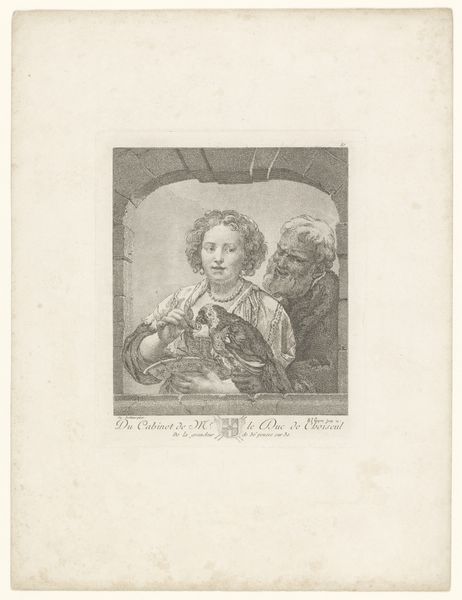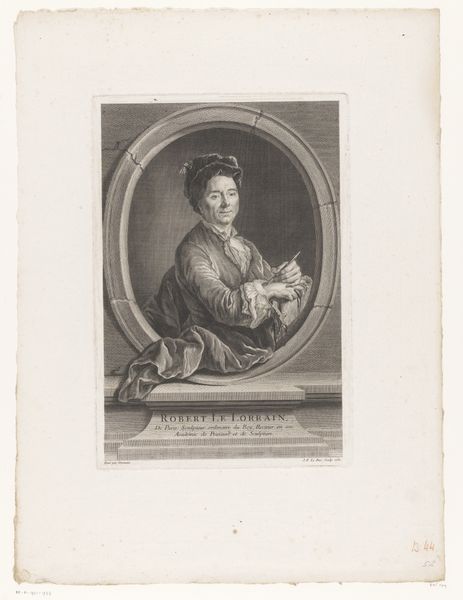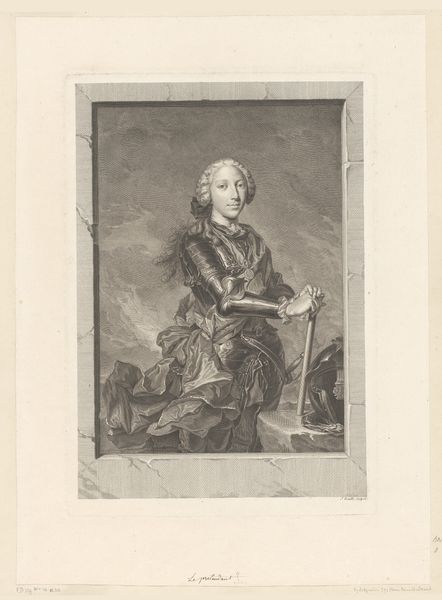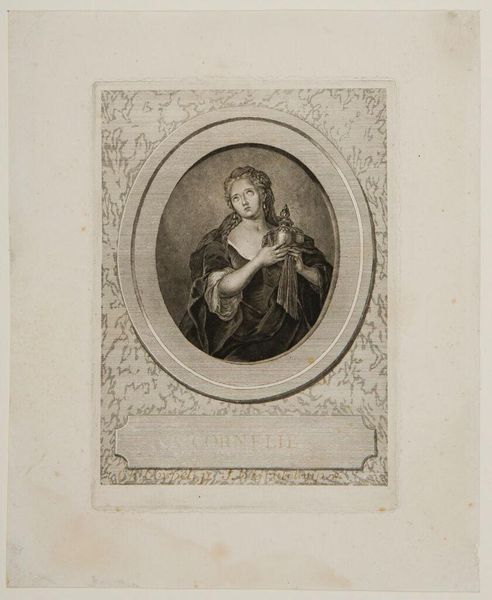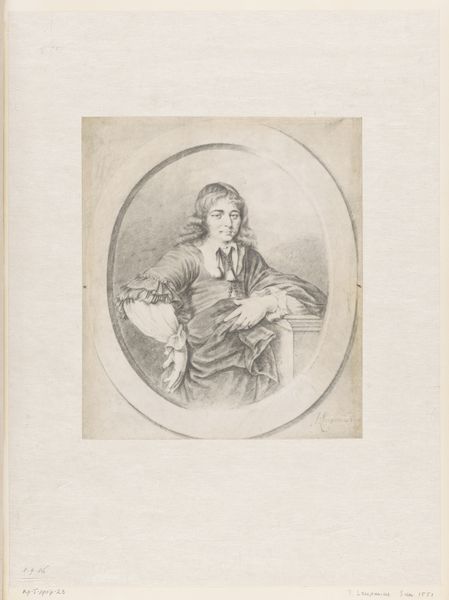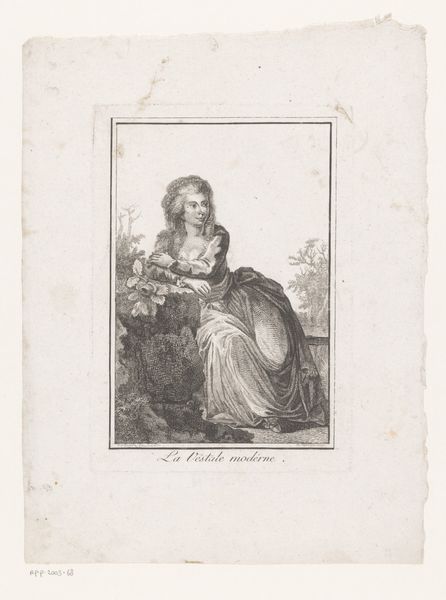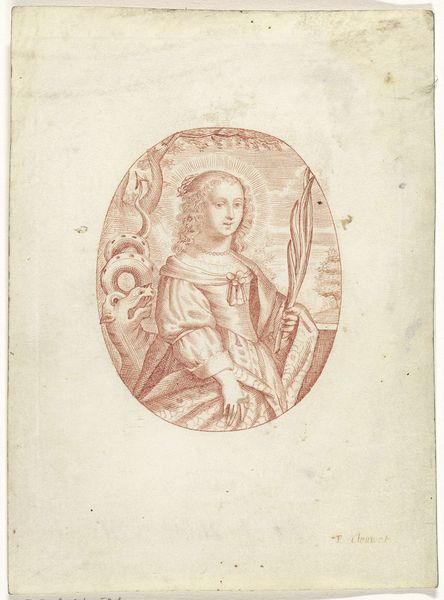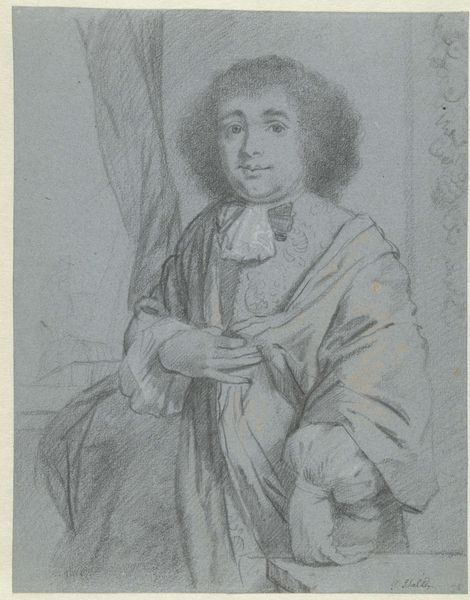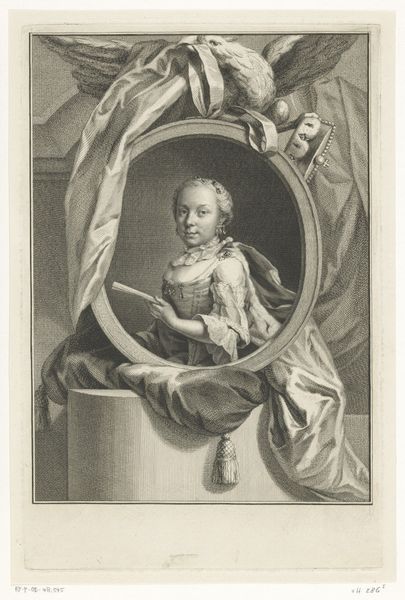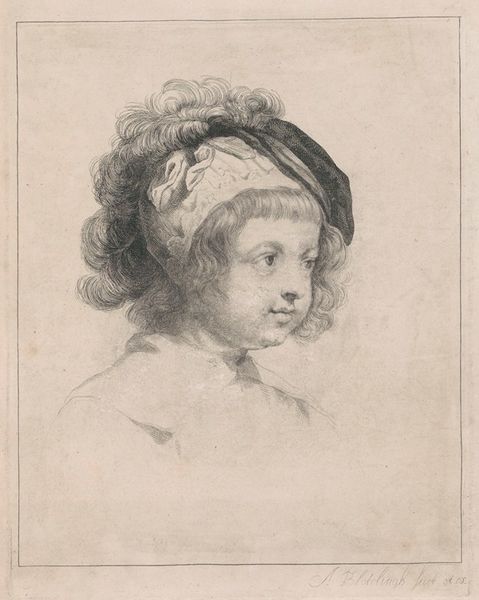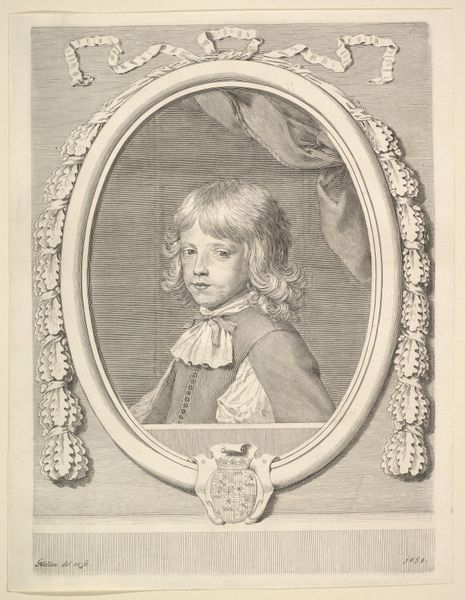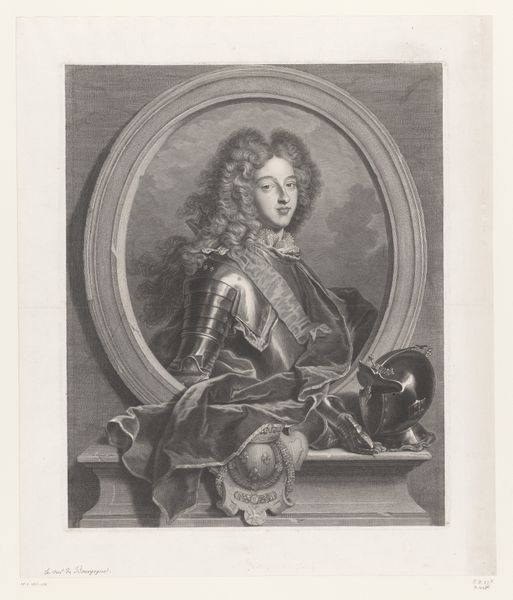
print, engraving
#
portrait
# print
#
figuration
#
genre-painting
#
history-painting
#
engraving
Dimensions: height 382 mm, width 270 mm
Copyright: Rijks Museum: Open Domain
Curator: Welcome. Today, we're looking at Reinhard Crommelin's "Zittende dame met mand met vruchten," an engraving that likely dates from somewhere between 1820 and 1871. Editor: Ah, yes. It has a delicate, almost wistful quality. The light seems to catch just so on the woman's face and the overflowing fruit basket. Very still. Almost serene. Curator: Indeed. Crommelin masterfully uses engraving to evoke textures, specifically the sheen of the fabric draped across the woman's torso against the rough texture of the wicker basket filled with fruit. There is a strategic employment of chiaroscuro, which directs our focus to the key elements. Editor: I notice how that fruit almost spills into our space, drawing us into this captured moment. There’s a definite air of… something held just barely in check, isn’t there? A sense of ripeness that borders on overripe, a kind of potent, hushed energy. Like right before something big happens. Or maybe I just want a snack. Curator: Perhaps it could symbolize the abundance of nature and prosperity of the sitter. Observe the detail: the lines that compose the leaves of the trees in the backdrop versus the finely rendered strands of hair that frame the woman's face. These juxtapositions are carefully constructed to build a complete representational structure. Editor: You see structure; I see whispers. A pearl necklace against a shadowy, suggested landscape…she's trapped. Opulence is imprisonment, the beauty stifling. The grapes look like they could burst any second and she’s just…there, sitting. Curator: But that immobility, that stillness, becomes, itself, an element of composition. The engraver arrests the action to invite contemplation. What does it mean to preserve a moment? And is she simply confined, or posed, presenting herself as the object for consumption? Editor: A potent question indeed. Ultimately, it feels as though we've each discovered entirely different artwork. Thank you for helping to shape this interpretation. Curator: The dialectic is precisely how art speaks. A worthwhile exploration!
Comments
No comments
Be the first to comment and join the conversation on the ultimate creative platform.
